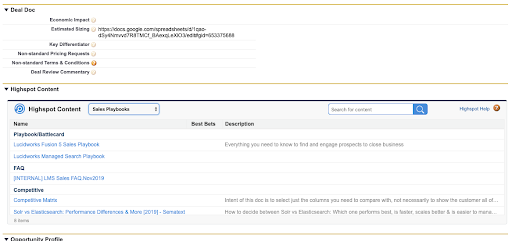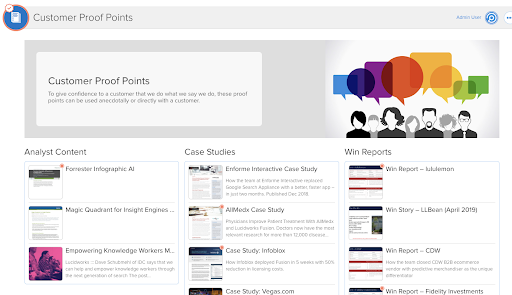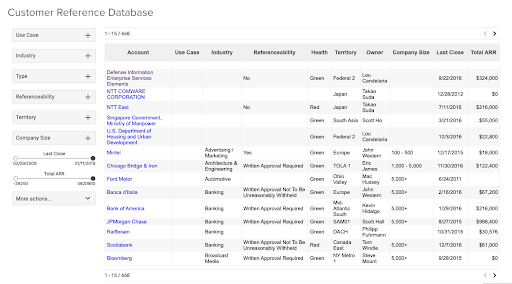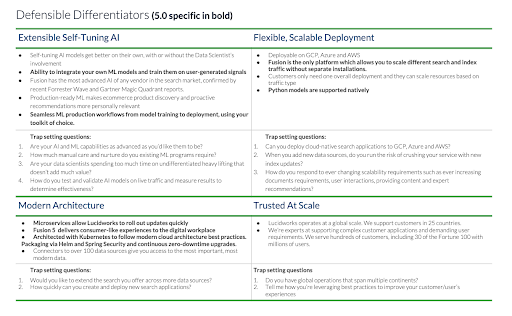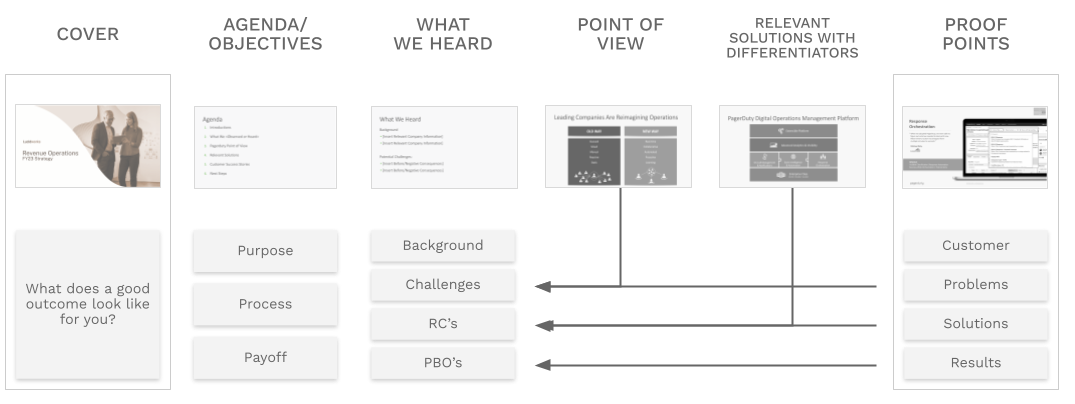Problem
The company’s products had strong market fit, but to grow, the company was adding additional products and selling to more senior buyers. The legacy marketing messaging and sales playbooks were focused on technical buyers who did not have access to budget, nor influence to accelerate purchasing decisions. Hence sellers were getting delegated to more junior technical buyers rather than budget owners, slowing deals or reducing ASP.
Solution
Updating the company’s messaging to a value based approach helps align all GTM teams around a consistent buyer-centric approach. A leading value based messaging framework is Force Management’s “Command of the Message” that executes a series of workshops to pull the company’s core value propositions out of the executive team and then works with a broad base of leaders and practitioners to build out a set of tools for Sellers, Marketers, Customer Success and executive team members to consistently speak using Value Based Messaging that speaks to their more critical business imperatives and answers the questions of “why do anything”, “why now” and “why us”.
I led two companies through this initiative working to get board approval, and managing the entire process with the consultants to pull together the executive team, leaders and key ICs on the sales, marketing, customer success and product teams to develop the content. The process involves:
- Defining the company’s value drivers: these are business priorities the customer base has regardless of the company’s existence
- For each value driver, define the before and after scenarios that the customer base will experience by purchasing the company’s solution
- Define the relevant product capabilities that can deliver on those positive business outcomes
- Define the differentiators that matter for each value driver
- Catalog the proof points that are relevant in different selling situations
- Build a living database of discovery and trap-setting questions that can be used at various stages of the sales engagement
Adoption Challenges
Once the framework has been developed, Force Management will deliver day and a half sessions to the reps (with breakouts, assessments and finally a live delivery exercise based on a deal in the rep’s funnel) and certify attendees if they can successfully adopt the new messaging. This is a critical first step, but adoption can fall off if the framework is not fully embedded in the company’s specific systems and practices.
With my Force Management certification as a facilitator I have delivered accreditation training to sales teams following the standard day and half agenda. I have also taken the messaging and condensed and adapted it to other teams who are customer facing but need different types of skills to embed the methodology. This can include:
- Professional Services teams (or CS depending on the product) who need to understand the value that the customer has purchased to be most effective at driving deployment and adoption. In too many Revenue orgs, the sales team closes a deal and the implementation team has very little insight into the specific business problem the customer is trying to solve.
- Customer success teams who conduct health checks and customer QBRs. These can be structured around validating existing value drivers and gathering success metrics to use in renewal discussions and as proof points.
Embedding the methodology into a company also requires taking the “value framework” PDF and Command of the Message concepts provided by Force Management and deconstructing and re-inserting the content and concepts into many other tools that reps and other team members use:
- Integrate the value messaging into tools like salesforce, and embedding MEDDPICC into opportunities and forecast reviews.
- Updating customer facing decks, discovery guides, product demos, marketing material, call scripts to include not just the messaging, but the value based flow.
- Work with the operations teams to reconfigure the GTM tech stack to measure adoption and effectiveness through tools like gong, salesforce, outreach and others to drive improvements and provide feedback for ongoing iteration.


